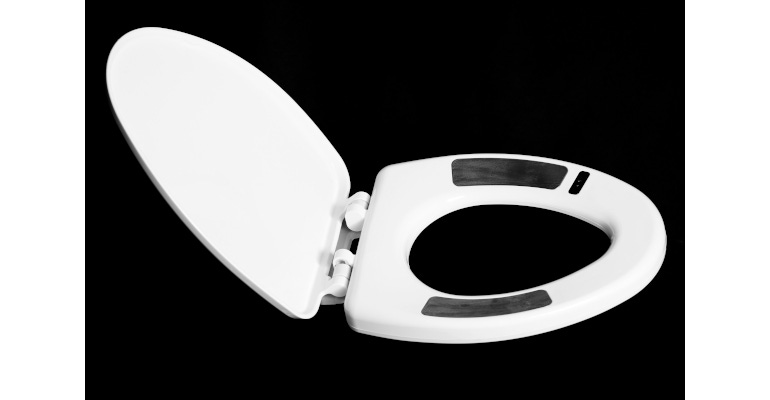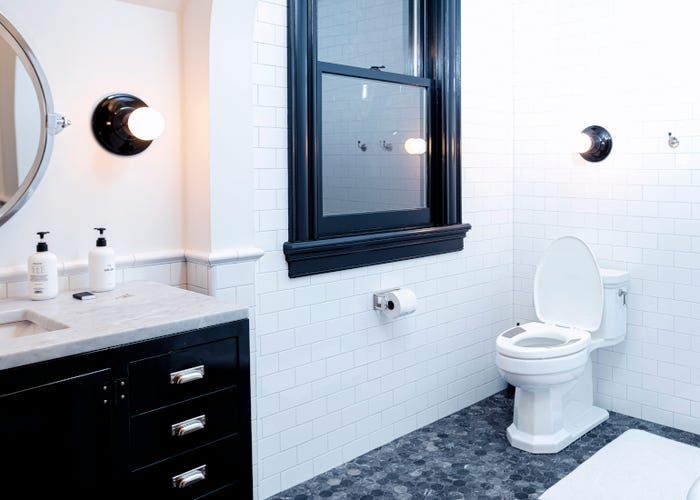A 90-second sit on The Heart Seat could capture patient vital signs for monitoring chronic conditions.
October 4, 2021

Rochester, NY-based Healthcare tech firm Casana is studying what could be the ultimate in passive telemonitoring technology—a toilet seat that gathers health data and vital signs. The company’s “The Heart Seat” is a connected device that gathers heart rate, blood oxygen level (SpO2), EKG, cardiac output, and blood pressure while the patient is sitting on the toilet seat. The device is planned to be prescription-based and is not yet FDA approved.
Currently the device is being studied in collaboration with the University of Florida’s Precision Health Research Center at the Villages. The study aims to determine whether the toilet seat leads to improvement in adherence among older adults compared with traditional home telemonitoring tools and to solicit feedback from patients and providers. Successful at-home monitoring could alert a physician to a health issue before the situation becomes an emergency, and it could help a patient manage chronic illness or even keep on top of overall goals like weight management.
The Heart Seat is Casana’s first product and was the result of research from Rochester Institute of Technology, referred to as RIT. RIT researchers devised the toilet seat to monitor cardiac patients for signs of early disease and thereby decrease hospital readmissions. Casana was rebranded from its former name, Heart Health Intelligence, in 2021.
Adherence as Baseline
Olivia Lew, chief commercial officer at Casana, explained the company views adherence as the base of a triangle, where other elements are built atop that foundation. “We believe that the unique form factor of being a toilet seat can help move the needle on the adherence front which provides more reliable data and then after that making sure that data is actionable and relevant,” said Lew. “Then the pinnacle is that all of those together lead to better outcomes.”
Adherence can be a stumbling block for remote patient monitoring for any number of reasons, including difficulty using a device and its technology, or not remembering to use the device. A smartwatch can be forgotten on a dresser, or a home-based device might require some technical savvy. Age can also be a differentiator; patients 65 and older did not grow up with technology and may find managing devices daunting.
“When you are asking someone who is managing multi-comorbid conditions to learn a new technology and then to actively remember to do their blood pressure screening or to stand on a scale every day, they may not want to do that, or they may have some challenges in their ability to do that whereas with the toilet seat all they have to do is go to the bathroom,” said Carla VandeWeerd, PhD, director of UF Clinical and Translational Science Institute at UF PHRC, who is leading the study. “As long as we have a 90-second sit, we are able to measure vital signs.” The toilet seat contains sensors that can capture data indicating fluid retention due to cardiac disease and blood pressure or heart rhythm abnormalities.
Passive Health Monitoring
As part of the current study, The Heart Seat has been installed by a technician, replacing a regular toilet seat for the 50 older patients who are planning to participate. The toilet seat technology gathers data on vital signs of a targeted patient, who can be distinguished from others in the household by biometrics like weight. With regular monitoring information, a full picture can be created of a patient’s health, and that data can be monitored for any changes that might warrant concern.

What’s more, data reports are customized. Parameters are set on an individual basis; during the initial setup of a device, the patient and his or her medical practitioner set thresholds. These can also include alerts for orange level occurrences like slow weight gain or red level events like certain heart rhythm changes.
“Curating the data to their preferences and giving folks control over their preferences is key,” explained Lew. “The data feed would go back to the physician based on thresholds set by the care team and patient together.” The thresholds may look completely different from patient to patient. Lew also explained the patient and caregiver can choose their degree of involvement, from receiving reports to no data at all, leaving management entirely up to the physician. The toilet seat device deliberately has no display panel to allow for no interaction, said Lew. “A lot of companies are doing a one size-fits-all monitoring device, but a lot of patients don’t want to see their data,” Lew added.
Ensuring Data Is Relevant
Casana is also clear that their goal is not simply to gather data, but to provide useful and actionable information for practitioners. “The goal is not to bombard healthcare providers with tons of data information points when they are already managing lots of different things, but to be able to successfully identify noise from signal,” said VandeWeerd. “They might get a summary sheet when the patient comes in for her annual appointment: here’s Mrs. Jones’ blood pressure tracking and her weight over the past month, but not be bombarded with information every minute.”
The current pilot study will include 6 weeks using The Heart Seat followed by another 6 weeks with traditional telemonitoring device, and concluding with gathering responses on ease of use, and customer preferences. After this pilot study, and potentially adjusting the design based on feedback, the company will begin to study efficacy of the toilet seat.
About the Author(s)
You May Also Like


